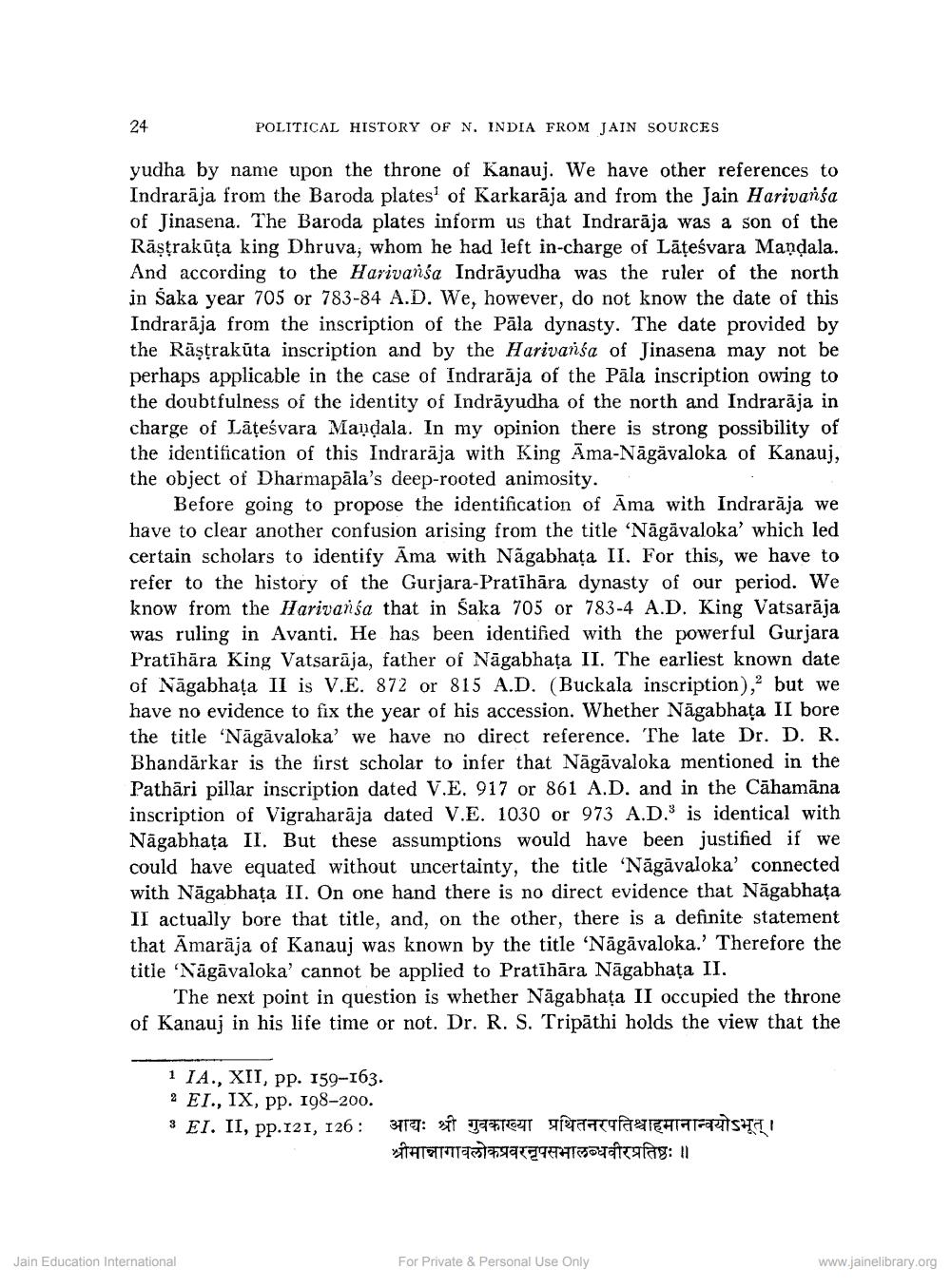________________
24
POLITICAL HISTORY OF N. INDIA FROM JAIN SOURCES
yudha by name upon the throne of Kanauj. We have other references to Indrarāja from the Baroda platest of Karkarāja and from the Jain Harivansa of Jinasena. The Baroda plates inform us that Indrarāja was a son of the Rāstrakūta king Dhruva; whom he had left in-charge of Lāțeśvara Mandala. And according to the Harivansa Indrāyudha was the ruler of the north in Saka year 705 or 783-84 A.D. We, however, do not know the date of this Indrarāja from the inscription of the Pāla dynasty. The date provided by the Rāştrakūta inscription and by the Harivansa of Jinasena may not be perhaps applicable in the case of Indrarăja of the Pāla inscription owing to the doubtfulness of the identity of Indrāyudha of the north and Indrarāja in charge of Lāțeśvara Mandala. In my opinion there is strong possibility of the identification of this Indrarāja with King Ama-Nāgāvaloka of Kanauj, the object of Dharmapāla's deep-rooted animosity.
Before going to propose the identification of Ama with Indrarāja we have to clear another confusion arising from the title 'Nāgāvaloka' which led certain scholars to identify Ama with Nagabhața II. For this, we have to refer to the history of the Gurjara-Pratihāra dynasty of our period. We know from the Harivansa that in Saka 705 or 783-4 A.D. King Vatsarāja was ruling in Avanti. He has been identified with the powerful Gurjara Pratīhāra King Vatsarāja, father of Nāgabhața II. The earliest known date of Nāgabhata II is V.E. 872 or 815 A.D. (Buckala inscription), but we have no evidence to fix the year of his accession. Whether Nāgabhata II bore the title 'Nāgāvaloka' we have no direct reference. The late Dr. D. R. Bhandārkar is the first scholar to infer that Nāgāvaloka mentioned in the Pathāri pillar inscription dated V.E. 917 or 861 A.D. and in the Cāhamāna inscription of Vigraharaja dated V.E. 1030 or 973 A.D. is identical with Nāgabhata II. But these assumptions would have been justified if we could have equated without uncertainty, the title 'Nāgāvaloka' connected with Nāgabhața II. On one hand there is no direct evidence that Nāgabhata II actually bore that title, and, on the other, there is a definite statement that Amaraja of Kanaus was known by the title 'Nāgāvaloka.' Therefore the title "Nāgāvaloka' cannot be applied to Pratīhāra Nāgabhata II.
The next point in question is whether Nāgabhata II occupied the throne of Kanauj in his life time or not. Dr. R. S. Tripathi holds the view that the
1 IA., XII, PP. 159-163. 2 EI., IX, pp. 198-200. 3 EI. II, pp.121, 126 : 3779: sf TFTE STATTFE TISHI
श्रीमान्नागावलोकप्रवरनृपसभालब्धवीरप्रतिष्ठः ॥
Jain Education International
For Private & Personal Use Only
www.jainelibrary.org




